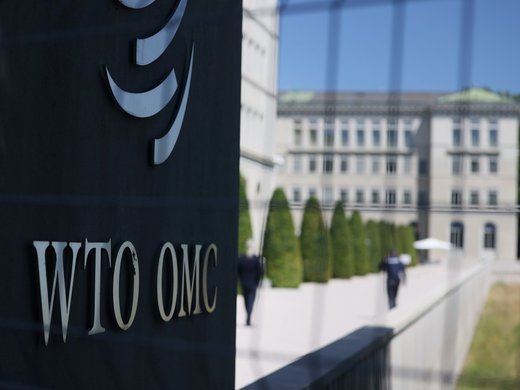CIGI and the Brookings Institution co-hosted a lunchtime seminar on the G20 Mutual Assessment Process (MAP) at the Canadian embassy in Washington, D.C. on the margins of the IMF-World Bank spring meetings. To encourage the frank exchange of views, the seminar was held under the Chatham House Rule by which participants are not identified.
As articulated at the Pittsburgh Summit, the objective of the MAP is to promote "strong, sustainable and balanced growth" (SSBG) within the G20 through multi-lateral review of and consultations on members' policies. In some respects, the MAP is the latest attempt to facilitate policy co-operation (weak form) or co-ordination (strong form) that have been attempted since the demise of the Bretton Woods system of managed exchange rates policed by the International Monetary Fund (IMF).
Under Bretton Woods, IMF members "co-ordinated" policy through their adherence to exchange rate parities and to their obligations under the IMF articles of agreement. After the collapse of the Bretton Woods system, efforts to cooperate (typically around crises) were managed by country groupings, starting with the G5; which was quickly succeeded by the G7.
In late 2008 and early 2009, however, it was clear that the global financial crisis was just that -- global in nature -- which the G7 lacked the scope and the capacity to contain. In this environment, G20 coordination was facilitated by a common threat: faced with the prospect of a global financial collapse that would harm all, a common, coordinated response was possible. Meanwhile, the IMF's "2 percent solution" under which countries were encouraged to provide new fiscal stimulus equal to two per cent of GDP helped foster a sense of shared, common response and provided a benchmark against which efforts could be monitored for possible free riding.
But as countries came out of the crisis at different speeds, the nature of the needed response changed. As one participant put it: the goal was no longer the same policy response at the same time, but appropriate policy responses at the appropriate times. Unfortunately, these differentiated policy requirements are both more difficult to agree on and more difficult to monitor compliance with. In this respect, while opinions on the appropriate targets for the exercise differ, the crux of the process is to re-balance the sources of global growth consistent with the SSBG objective.
There are big analytical and operational challenges here. Analytically, the problem is to avoid an asymmetric international adjustment process in which the full burden of adjustment is borne by deficit (current account) countries so as to avoid a deflationary bias to the global economy.
Unfortunately, this is precisely the risk now stalking the global economy. Deflation in Japan is not the only, or indeed major, source of the problem. Dysfunctional monetary arrangements in Europe are driving the same kind of forces of stagnation that prevailed between the First and Second World Wars. Readers of this blog will know why I think this is the case: sadly, Europe has reconstructed the "bad" gold standard of the inter-war years that propagated stagnation through an asymmetric adjustment process, as surplus countries sterilized gold accumulation, while the "old lady of Threadneedle Street" (the Bank of England) was too feeble to provide the public good of international financial stability.
Moreover, because the "black box" of the monetary transmission mechanism is not working as a result of the financial crisis, major central banks have had to resort to "exceptional measures", including quantitative easing and interest rates at historically-low levels.
One result of this has been capital flows to countries that are growing more quickly and which offer the prospects of higher returns. But these countries are reluctant to absorb the accompanying appreciation of their exchange rates, and fearful of fuelling asset price bubbles (particularly when some others have tied their currencies to the dollar). As a result, they have resorted to "prudential regulation" to limit the appreciation of their currencies.
The impact of all this has been to limit nominal exchange rate adjustment. And this, in turn, implies that the real exchange rate adjustments required to facilitate the needed re-balancing must come from inflation in surplus countries and deflation in deficit countries. This is not in anyone's interest.
A more felicitous outcome, in which everyone is better off, is possible. But to secure such a Pareto improvement, cooperation is necessary. And some monitoring mechanism is needed to support a cooperative equilibrium. This is where the G20 MAP comes in.
What about the operational challenges to strengthened cooperation?
The first is a lack of trust. As noted by one seminar participant: "Nothing much happens in terms if international cooperation unless the U.S. is involved. But if it is only the U.S. involved, nothing much happens." Not to put too fine a point on it, the U.S. supported the MAP because it needs external demand if it is to grow while the difficult, painful process of (public and private) balance sheet restructuring is in process.
This underscores the need for a symmetric adjustment process. Yet, under the rules of the Bretton Woods system, the onus of adjustment was on deficit countries. From the perspective of other countries, therefore, attempts to re-balance via symmetrIc adjustment are viewed with suspicion -- as an attempt to pass the "hot potato" of adjustment to others.
This might explain the failure of the pre-crisis multi-lateral consultation exercise orchestrated by the IMF. To put it bluntly, the erosion of legitimacy suffered by the Fund as a result of the financial crises of the past two decades reduced its effectiveness and its credibility. The G20 MAP should have more legitimacy (at least among G20 members) because it is for, of and by the G20.
But the analytical challenges are difficult; it will be hard to get agreement on them. Moreover, the tendency, noted by several participants at the CIGI-Brookings seminar, for the G20 agenda to broaden beyond the core economic and financial base which gave the G20 process legitimacy is worrying. While this trend allows all members to claim success an issue of their interest or to "commit" to actions they were going to do in any event, it does nothing to address the real economic problems in the global economy. Moreover, it threatens to undermine the effectiveness and legitimacy of the process.
The G20 MAP is not perfect, to be sure. However, it is the best hope we have for securing a cooperative, Pareto-improving resolution to the problem of asymmetric adjustment in a fragile global economy.


